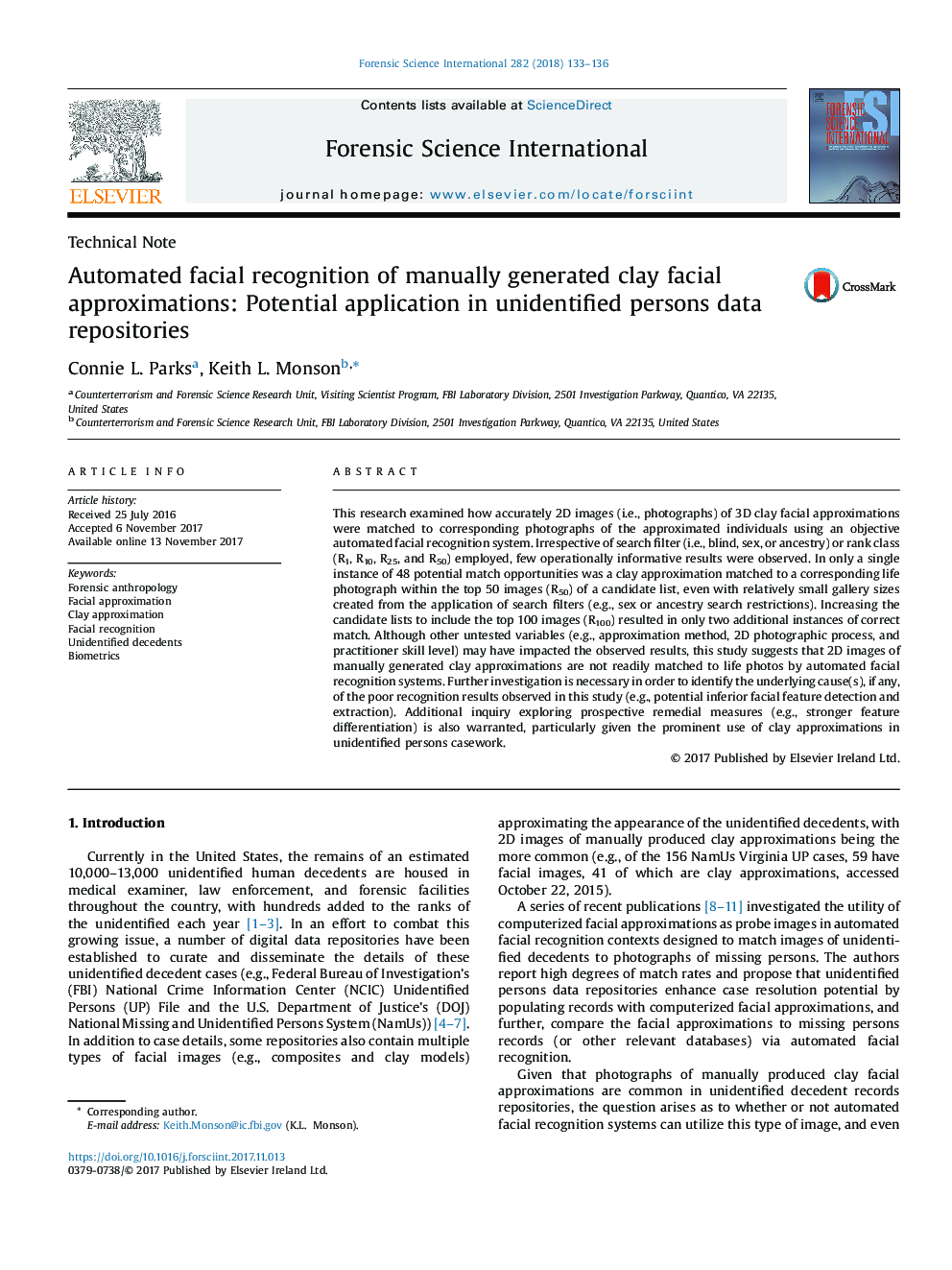| Article ID | Journal | Published Year | Pages | File Type |
|---|---|---|---|---|
| 6551386 | Forensic Science International | 2018 | 4 Pages |
Abstract
This research examined how accurately 2D images (i.e., photographs) of 3D clay facial approximations were matched to corresponding photographs of the approximated individuals using an objective automated facial recognition system. Irrespective of search filter (i.e., blind, sex, or ancestry) or rank class (R1, R10, R25, and R50) employed, few operationally informative results were observed. In only a single instance of 48 potential match opportunities was a clay approximation matched to a corresponding life photograph within the top 50 images (R50) of a candidate list, even with relatively small gallery sizes created from the application of search filters (e.g., sex or ancestry search restrictions). Increasing the candidate lists to include the top 100 images (R100) resulted in only two additional instances of correct match. Although other untested variables (e.g., approximation method, 2D photographic process, and practitioner skill level) may have impacted the observed results, this study suggests that 2D images of manually generated clay approximations are not readily matched to life photos by automated facial recognition systems. Further investigation is necessary in order to identify the underlying cause(s), if any, of the poor recognition results observed in this study (e.g., potential inferior facial feature detection and extraction). Additional inquiry exploring prospective remedial measures (e.g., stronger feature differentiation) is also warranted, particularly given the prominent use of clay approximations in unidentified persons casework.
Keywords
Related Topics
Physical Sciences and Engineering
Chemistry
Analytical Chemistry
Authors
Connie L. Parks, Keith L. Monson,
